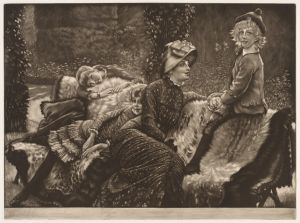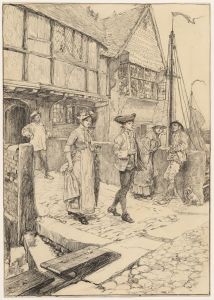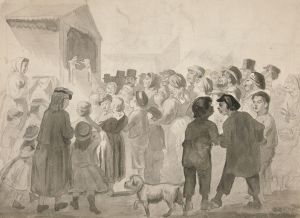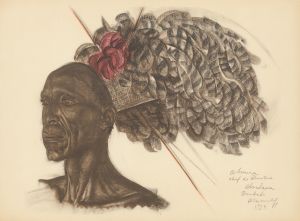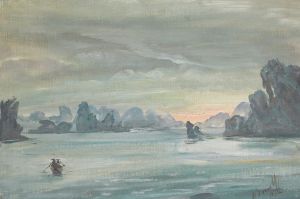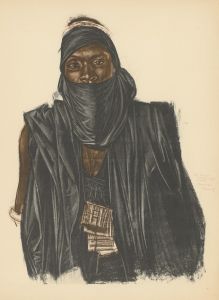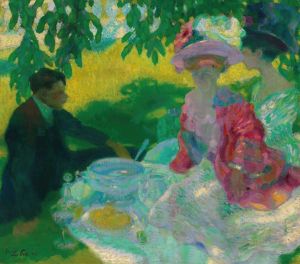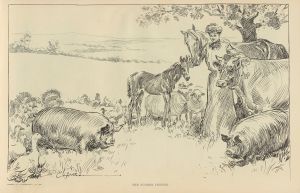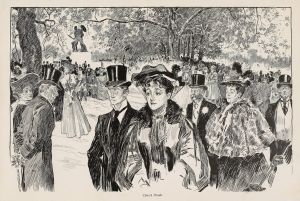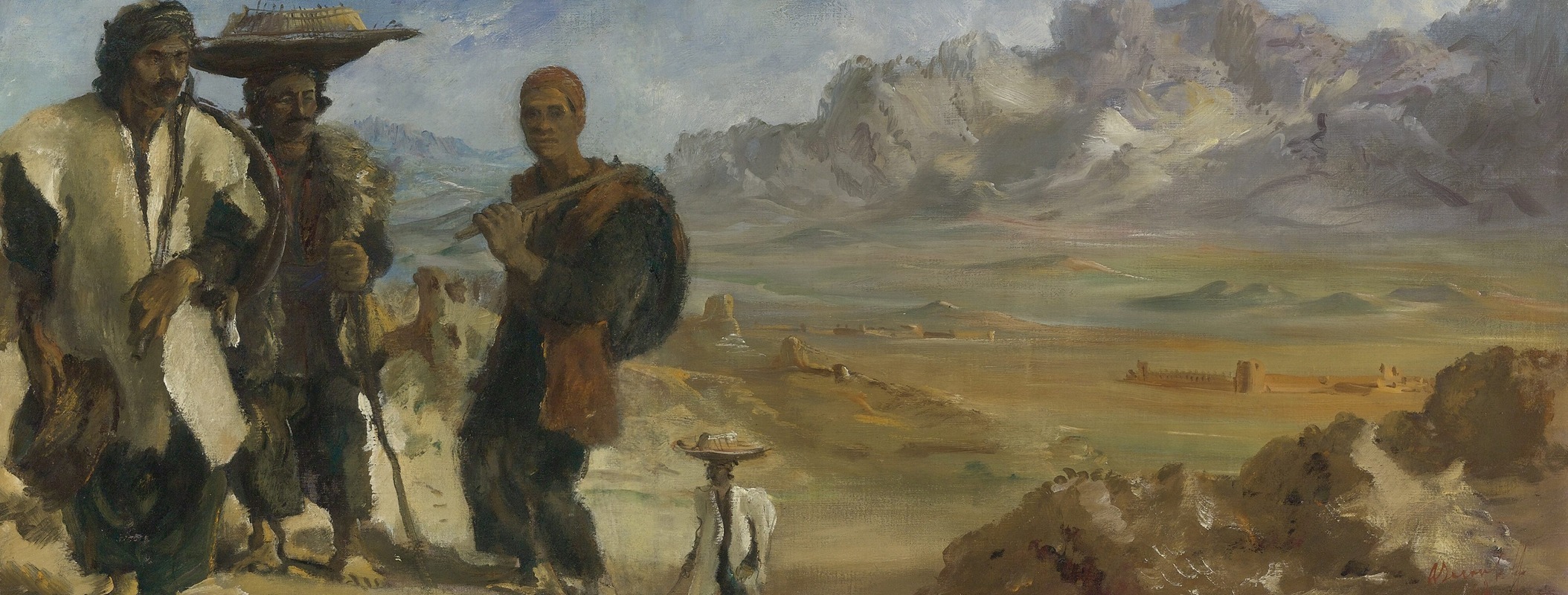
Kurds Near Kermanshah
A hand-painted replica of Alexandre Jacovleff’s masterpiece Kurds Near Kermanshah, meticulously crafted by professional artists to capture the true essence of the original. Each piece is created with museum-quality canvas and rare mineral pigments, carefully painted by experienced artists with delicate brushstrokes and rich, layered colors to perfectly recreate the texture of the original artwork. Unlike machine-printed reproductions, this hand-painted version brings the painting to life, infused with the artist’s emotions and skill in every stroke. Whether for personal collection or home decoration, it instantly elevates the artistic atmosphere of any space.
"Kurds Near Kermanshah" is a painting created by the Russian artist Alexandre Jacovleff (also spelled Yakovlev) in 1926. Jacovleff was known for his extensive travels and his ability to capture the essence of the diverse cultures he encountered. This particular work is a vivid representation of the Kurdish people near the city of Kermanshah in western Iran.
Alexandre Jacovleff was born in Saint Petersburg, Russia, in 1887. He studied at the Imperial Academy of Arts and later became associated with the Mir Iskusstva (World of Art) movement, which emphasized the importance of beauty and craftsmanship in art. Jacovleff's career was marked by his extensive travels, which took him to various parts of Asia, Africa, and Europe. His journeys provided him with a wealth of subjects and inspiration for his art.
In 1924, Jacovleff joined the Citroën Central Asia Expedition, also known as the Croisière Noire, which was an ambitious overland journey from Beirut to Beijing. The expedition was organized by the French automobile manufacturer Citroën and aimed to demonstrate the capabilities of their vehicles while also conducting scientific and ethnographic research. Jacovleff served as the official artist of the expedition, documenting the landscapes, peoples, and cultures they encountered along the way.
"Kurds Near Kermanshah" was created during this expedition. The painting depicts a group of Kurdish people in their traditional attire, set against the backdrop of the rugged landscape near Kermanshah. The Kurds are an ethnic group native to the mountainous regions of Iran, Iraq, Syria, and Turkey. They have a rich cultural heritage and a distinct language, which is part of the Indo-Iranian branch of the Indo-European language family.
Jacovleff's painting captures the dignity and resilience of the Kurdish people. The figures are rendered with meticulous attention to detail, showcasing their distinctive clothing and accessories. The use of color and light in the painting highlights the harsh yet beautiful environment in which the Kurds live. The composition of the painting draws the viewer's eye to the central figures, creating a sense of intimacy and connection with the subjects.
"Kurds Near Kermanshah" is an important work in Jacovleff's oeuvre, as it exemplifies his ability to combine ethnographic observation with artistic expression. The painting not only serves as a visual record of the Kurdish people and their environment but also reflects Jacovleff's deep appreciation for the diversity of human cultures.
Today, "Kurds Near Kermanshah" is held in private collections and occasionally displayed in exhibitions dedicated to Jacovleff's work or the art of the early 20th century. The painting continues to be admired for its technical skill, cultural significance, and the insight it provides into the lives of the Kurdish people during the early 20th century.





